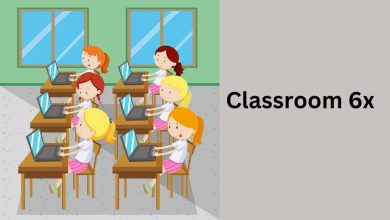The Correct Spelling is School Not School. Some Pe – tymoff

Introduction to the common misspelling of
Welcome to our blog where we unravel the mysteries of language and spelling! Today, we dive into a common mix-up that might have slipped past your spell-check: The Correct Spelling is School Not School. Some Pe – tymoff Yes, you read that right – it’s not a typo! Let’s uncover the origin, meaning, and tricks to avoid this sneaky misspelling together. Gear up for some enlightening insights and tips to level up your spelling game!
The origin and meaning of the word
Have you ever stopped to ponder the origin and meaning of the word “school”? This seemingly simple term actually has a rich history dating back centuries. The word “school” originates from the Latin word “schola”, which itself is derived from the Greek word “skholē” meaning leisure, a concept quite distinct from our modern understanding of schooling!
In ancient times, attending school was seen as a privilege reserved for those who had the luxury of leisure time to dedicate to learning. It wasn’t until much later in history that formal education became more widely accessible.
The evolution of this word mirrors society’s changing attitudes towards education throughout different eras. Today, we associate “school” with structured learning environments where students gain knowledge and skills essential for their future endeavors.
Understanding the roots of words like “school” can deepen our appreciation for their significance in shaping human civilization.
Common misconceptions about the word
One common misconception about the word “school” is that it should be spelled as “s-c-h-o-o-l.” However, the correct spelling is S-C-H-O-O-L. This mix-up often occurs due to the word’s pronunciation, leading some people to add an extra ‘C incorrectly.
Another misconception is linking the spelling with similar words like “shovel” or “scholar.” While these words may sound alike, they have distinct spellings and meanings.
Remembering that English can be tricky with its silent letters and unusual phonetics is essential. So, even if a word sounds a certain way, it doesn’t always follow that pattern when it comes to spelling.
By understanding these misconceptions and focusing on proper spelling rules, you can avoid common errors in writing and communication. Keeping an eye out for these pitfalls will help you improve your language skills over time.
Examples of incorrect usage and how to avoid them
Have you ever encountered the misspelling “school” instead of “school”? A common error stems from typing too fast or relying on autocorrect. When writing about educational topics, paying attention to such details is crucial.
For instance, phrases like “I went to scool today” or “Let’s meet up at the local shcool” are incorrect and can detract from your message. To avoid these mistakes, take a moment to proofread your work before publishing it. You can also use tools like spell checkers to catch any spelling errors.
Remember, precision in language is key when discussing academic matters. By ensuring you spell “school” correctly, you maintain credibility and professionalism in your writing. So next time you’re tempted to type out “scool,” pause and double-check for accuracy – your readers will thank you!
Other frequently misspelled words related to education
Regarding education, several words tend to trip people up regarding spelling. One common word that often gets misspelled is “principal,” which refers to the head of a school. Many mistakenly spell it as “principle,” which actually means a fundamental truth or belief.
Another frequently confused pair of words in an educational context are “affect” and “effect.” While they sound similar, they have different meanings – “affect” is typically used as a verb meaning to influence, while “effect” is usually used as a noun denoting a result or consequence.
Similarly, the terms “stationary” and “stationery” cause confusion for many. The former refers to something that is not moving, while the latter pertains to writing materials like paper and envelopes.
Paying attention to these commonly mixed-up words related to education can enhance your spelling skills and improve your written communication overall.

Tips for improving spelling skills
Want to become a spelling pro? Here are some tips to help you improve your spelling skills!
One effective way is to read more often. The more you expose yourself to correctly spelled words, the better you’ll become at recognizing them.
Another tip is to practice writing. Whether it’s journaling, writing stories, or even just jotting down notes, regular writing can help reinforce proper spelling.
Don’t be afraid to use spell-check tools when in doubt. They can catch mistakes that might slip through otherwise.
Make a habit of learning new words and their correct spellings regularly. This will expand your vocabulary and sharpen your spelling abilities.
Try using mnemonic devices or visualization techniques for tricky words. Associating a word with an image or a phrase can make it easier to remember its correct spelling.
You’ll soon notice improved spelling accuracy by incorporating these tips into your daily routine!
Conclusion
Mastering spelling words like “school” is crucial for effective communication. By understanding the origin and meaning of words, recognizing common misconceptions, and practicing proper usage, you can avoid misspellings and enhance your writing skills. Remember to pay attention to other frequently misspelled words related to education and implement tips for improving your overall spelling abilities. Dedication and practice can make you more confident in expressing yourself accurately through written language. So remember, The Correct Spelling is School Not School. Some Pe – tymoff with perseverance and effort, you’ll get there!




